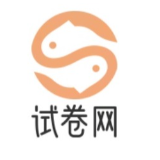当前位置
国家开放大学化工学院理工英语4期末考试试卷与参考答案
摘要:国家开放大学化工学院理工英语4期末考试试卷与参考答案
以下是一份针对国家开放大学化工学院理工英语4期末考试的复习笔记,供参考:
关键字: 绿色技术驱动制造业流程优化数字化转型案例分析 制造业职业健康安全管理体系培训方案实施策略 虚拟现实技术提升企业数字化学习系统员工技能方法 化工行业风险控制体系与职业资格认证制度应用 医疗行业员工终身学习模式在线教育平台构建 虚拟现实技术在制造业工业维修技能培训中的优势分析 制造业流程优化管理智能化数字化转型策略 化工行业职业健康管理风险控制体系构建方法 绿色技术环保行业数字化学习系统开发方案 医疗行业
想要快速找到正确答案?
立即关注 国开搜题微信公众号,轻松解决学习难题!

作业辅导
扫码关注
论文指导
轻松解决学习难题!
国家开放大学化工学院理工英语4期末考试试卷与参考答案
以下是一份针对国家开放大学化工学院理工英语4期末考试的复习笔记,供参考:
国家开放大学化工学院理工英语4期末考试复习笔记
一、考试结构概述
国家开放大学理工英语4期末考试通常涵盖以下题型,总分100分,考试时间120分钟:
1. 词汇与语法(约20分)
- 词汇:专业术语、科技文献常用词汇。
- 语法:科技英语中的被动语态、条件句、名词化结构、科技文献中复杂句式的理解。
2. 阅读理解(约30分)
- 科技类短文阅读(化工、材料、能源等领域),需根据文章内容回答问题。
3. 翻译(约30分)
- 中译英/英译中:化工专业句子或段落翻译,注重术语准确性和句子结构。
4. 写作(约20分)
- 科技报告或摘要写作,需结合化工专业知识,语言简洁规范。
二、重点难点解析
1. 词汇与语法
- 专业术语:
- 化工领域常见术语(如:catalyst, polymerization, distillation, reactor, solubility)。
- 科技文献高频词汇(如:analyze, synthesize, optimize, methodology, application)。
- 语法要点:
- 被动语态在科技写作中的应用(例:The experiment was conducted under high pressure.)。
- 条件句与假设(如:If the temperature exceeds 100°C, the reaction will accelerate.)。
- 名词化结构(如:The acceleration of reaction rates is crucial for industrial processes.)。
- 复杂长句的拆分与理解(科技文章中多为复合句,需注意逻辑关系词如 *however, therefore, consequently* 等)。
2. 阅读理解
- 题型特点:
- 短文主题多涉及化工技术、实验流程、材料科学等。
- 题目类型包括细节题、主旨题、推理题、词汇题。
- 应试技巧:
- 通读全文,抓住主题句(通常位于段首或段尾)。
- 标记关键词(如:chemical processes, experimental results, technical parameters)。
- 细节题需定位原文,避免主观臆断。
3. 翻译
- 中译英难点:
- 专业句子的准确翻译(例:“催化剂在反应中起到加速作用” → *The catalyst plays a role in accelerating the reaction.*)。
- 保持句子简洁,避免直译导致的生硬表达。
- 英译中难点:
- 复杂长句的拆分与重组(例:The synthesis of polymers involves a series of chemical reactions under controlled conditions. → 聚合物的合成涉及在控制条件下进行的一系列化学反应。)。
- 专业术语的中文对应(如:*distillation column* → 分馏塔;*reactor* → 反应器)。
4. 写作
- 要求:
- 结构清晰:标题、引言、方法、结果、结论。
- 使用专业术语,避免口语化表达。
- 数据与实验描述需准确(例:实验温度为500℃,反应时间持续2小时)。
- 常见主题:
- 实验报告(如:描述催化剂制备过程)。
- 科技摘要(如:某化工工艺的改进方法)。
三、备考建议
1. 词汇积累:
- 制作专业术语卡片,结合教材和实验报告复习。
- 重点记忆化工领域高频词汇及搭配(如:*conduct an experiment*, *analyze the data*, *optimize the process*)。
2. 语法强化:
- 通过科技文献例句分析被动语态、条件句等用法。
- 练习长难句拆分与重组,提升理解能力。
3. 阅读训练:
- 多阅读化工类英文文章(如期刊摘要、实验步骤说明)。
- 练习限时阅读,提高信息提取效率。
4. 翻译技巧:
- 先理解句子逻辑,再逐句翻译,注意术语准确性。
- 参考教材例句或专业文献中的标准表达。
5. 写作模拟:
- 根据教材例文,模仿科技报告的结构和语言风格。
- 练习撰写100-150词的摘要或实验步骤,注重逻辑连贯。
6. 历年真题:
- 通过分析往届试卷熟悉题型和出题方向。
- 重点关注翻译和写作部分的评分标准。
四、模拟练习题及参考答案
1. 词汇选择(示例)
题干:
The process of separating components in a mixture by heating is called ______.
A. distillation
B. polymerization
C. catalysis
D. solubility
答案:A. distillation
2. 阅读理解(示例)
短文节选:
In chemical engineering, distillation is a common method for separating liquids with different boiling points. The process involves heating the mixture to vaporize the components, followed by condensation and collection of the desired fractions.
问题:
What is the main purpose of distillation?
A. To dissolve solids in a liquid
B. To separate liquids based on boiling points
C. To increase reaction rates
D. To measure chemical concentrations
答案:B. To separate liquids based on boiling points
3. 翻译(示例)
中译英:
“在高温高压条件下,催化剂能显著提高反应速率。”
参考答案:
Under high temperature and pressure conditions, the catalyst can significantly enhance the reaction rate.
4. 写作(示例)
题目:
Write a short summary (about 100 words) of the experiment described in Unit 3, focusing on the procedure and results.
参考范文:
The experiment aimed to study the effect of temperature on the catalytic activity of a new polymerization catalyst. The procedure involved heating the catalyst to varying temperatures (200°C, 300°C, 400°C) and measuring the reaction rate using a spectrophotometer. Results showed that catalytic activity peaked at 300°C, with a reaction rate of 1.2 mol/min, compared to 0.8 mol/min at 200°C and 0.5 mol/min at 400°C. This indicates that moderate temperatures optimize catalyst performance. The findings are significant for industrial applications where temperature control is critical.
五、注意事项
1. 术语准确性:翻译和写作中专业术语错误会导致失分,需反复核对。
2. 时间分配:
- 词汇与语法:20分钟
- 阅读理解:30分钟
- 翻译:40分钟
- 写作:30分钟
3. 答题规范:
- 写作需用正式学术语言,避免语法错误。
- 翻译注意句子结构(如被动语态、名词化表达)。
六、推荐资源
1. 教材:《理工英语4》(国家开放大学指定教材)。
2. 在线学习:
- 可汗学院(Chemistry/Engineering相关课程)。
- 专业期刊网站(如ACS、Elsevier)阅读科技文章。
3. 学习小组:与同学讨论翻译难点和写作思路,互相批改练习。
七、考试策略
- 先易后难:优先完成词汇、语法题,再处理阅读和翻译。
- 检查逻辑:翻译和写作完成后通读一遍,确保逻辑与专业表述无误。
- 保持冷静:遇到生词时,结合上下文猜测含义,避免过度纠结。
希望以上内容能帮助你高效备考!如果有具体题目或知识点需要进一步解析,可以结合教材内容继续补充。
文章目录
文章作者:开大题库网
文章标题:国家开放大学化工学院理工英语4期末考试试卷与参考答案
文章链接:https://www.yuyue-exam.com/occh/19579.html
本站所有文章除特别声明外,均采用 CC BY-NC-SA 4.0 许可协议,转载请注明来自开大题库网 !
文章标题:国家开放大学化工学院理工英语4期末考试试卷与参考答案
文章链接:https://www.yuyue-exam.com/occh/19579.html
本站所有文章除特别声明外,均采用 CC BY-NC-SA 4.0 许可协议,转载请注明来自开大题库网 !
版权所有:开大题库网
文章标题:国家开放大学化工学院理工英语4期末考试试卷与参考答案
文章链接:https://www.yuyue-exam.com/occh/19579.html
本站文章均来自网上,如侵权,联系站长立即删除。
文章标题:国家开放大学化工学院理工英语4期末考试试卷与参考答案
文章链接:https://www.yuyue-exam.com/occh/19579.html
本站文章均来自网上,如侵权,联系站长立即删除。
相关文章
- 12025秋国家开放大学化工学院反应工程作业答案
- 22025秋国家开放大学化工学院电子商务概论作业答案
- 32025秋国家开放大学化工学院四史通讲作业答案
- 42025秋国家开放大学化工学院化学反应过程及设备作业答案
- 52025秋国家开放大学化工学院化工原理实验(仿真)操作(上)作业答案
- 62025秋国家开放大学化工学院化工生产岗位技能操作培训作业答案
- 72025秋国家开放大学化工学院化工原理实验(仿真)操作(下)作业答案
- 82025秋国家开放大学化工学院化工单元操作(下)作业答案
- 92025秋国家开放大学化工学院生产与运作管理作业答案
- 102025秋国家开放大学化工学院化工环境保护及安全技术作业答案
- 112025秋国家开放大学化工学院化工企业管理人员专题培训作业答案
- 122025秋国家开放大学化工学院HSE与清洁生产作业答案
- 132025秋国家开放大学化工学院马克思主义基本原理概论作业答案
- 142025秋国家开放大学化工学院流通概论作业答案
- 152025秋国家开放大学化工学院市场营销学作业答案
- 162025秋国家开放大学化工学院习近平新时代中国特色社会主义思想概论作业答案
评论留言请发表您的神机妙论……
取消回复
评论列表(共有0条评论)
站点资料

开大题库网是国家开放大学学习者的专属资源平台,整合全国电大系统(含广州、宁波等地方开放大学)的历年考试真题、形考作业参考答案及复习指南。网站支持按课程名称、试卷代码(如1379人文英语3、1255计算机网络等)精准检索,提供试卷下载、答案解析及题库推荐功能。涵盖行政管理、金融学、计算机等热门专业,定期更新最新考试动态与备考攻略,帮助学生高效规划复习计划,一站式解决作业与考试难题。
- 文章68651
- 评论0
- 微语0
搜索
热门文章
最新文章
标签
- 国家开放大学乡村振兴学院(重点帮扶县)
- 渝粤文库
- 国家开放大学乡村振兴学院(滨州)
- 渝粤搜题
- 保险企业高校联合人才培养模式构建策略
- 智能学习平台保险精算课程体系架构设计
- 保险科技区块链理赔场景应用案例解析
- 保险多级认证体系搭建与实施路径方法
- 保险案例教学法实战应用课程设计框架
- 保险反洗钱合规管理实务要点解析
- 保险理赔全流程操作培训课程设计
- 保险从业资格考试高通过率备考技巧指南
- 保险经纪人线上课程平台功能比较分析
- 保险行业数字化转型人才培养方案优化策略
- 教育信息化缩小区域教育
- 学习行为分析驱动个性化教学系统开发实践
- 跨文化智能技术全球化人才培养路径融合策略
- 文化遗产数字化传承教育模式创新方法探索
- 智能学习系统缩小城乡教育差距案例实证研究
- 人工智能与教育信息化融合策略优化路径研究
- 乡村在线教育课程互动设计用户参与度提升策略研究
- 农村电商合作社运营管理模式优化绩效提升实践研究
- 区域特色农产品品牌联合营销策略路径设计案例
- 农业科技数字平台县域推广创新模式案例分析
- 农产品冷链物流末端配送成本控制技术优化策略
- 乡村教育公平性资源分配优化路径区域差异研究
- 农民数字化培训课程效果评估模型构建方法
- 农业物联网低成本智能监控设备研发应用案例
- 成人考试冲刺智能题库推荐排名对比
- 手机端智能题库免费答题系统下载平台
- 继续教育课程选择指南在线平台推荐
- 企业学习管理系统解决方案供应商排名推荐
- 远程辅导一对一服务价格对比平台推荐
- 智能题库考试冲刺训练技巧指南下载
- 数字教育资源在线学习平台排名对比
- 手机端免费学习资源下载平台推荐
- 智能学习系统考试技巧提升方法指南
- 成人在线教育课程推荐平台选择指南
- 农业物联网智能监控系统设计
- 远程协作学习工具开发应用
- 教育资源共享平台建设与实施
- 生态农业可持续发展模式实践
- 农业自动化设备创新研发方案
- 智能灌溉系统节能设计优化
- 农业无人机精准喷洒技术方案
- 农业大数据分析技术应用研究
- 自适应学习系统应用场景分析
- 在线教育平台开发解决方案
- 教育信息化推动教学创新实践研究
- 教育质量多维度评估工具开发与应用



